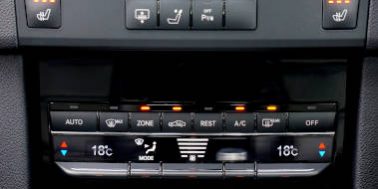It may not have yet hit the heat wave of 2018 but there have certainly been days when it’s hot enough to crank up the air conditioning. It’s not just on hot sunny days that we want to get the air conditioning working. It helps to create a comfortable climate if it is muggy outside or to filter out the air when you’re stuck in traffic and don’t want to breathe in everyone else’s fumes. How does it do all that? Let’s take a look…
The basics of air conditioning systems
There are five basic components to any air conditioning system, be it in your home or car. They are the: compressor, condenser, receiver-dryer, expansion valve, and evaporator. The system also contains a refrigerant.
How each component works
Each component has a job to do which, when put together, is what cools the inside of your car.
- The compressor is the hardest working part of your air conditioning system. It is connected to the engine and will pump the refrigerant to the condenser unit under high pressure.
- The condenser will take that refrigerant and change the state of it from a gas under high pressure to a liquid. That high pressure is what changes its state to that of a liquid and as it does so, it generates heat. Going back to secondary school physics, energy cannot be created or destroyed. That heat is the change in energy. This heat is removed from the system by the condenser and expelled outside the car.
- Now is the turn of the receiver to play a role. The liquid that was created by the condenser moves to the receiver-dryer whose job it is to remove any moisture that may have been created in that process and remove it from the refrigerant. Moisture can freeze, creating ice crystals which will cause problems for an air conditioning unit so it’s important to remove it from the process.
- The expansion valve’s job is to take that refrigerant and allow it to expand. This way it moves from a liquid state to that of a vapour. Setting the desired temperature in your vehicle controls the expansion valve – the cooler you want it to be the more it allows the air to expand.
- Moving on to the evaporator, the cold refrigerant – now under low pressure – passes over it absorbing heat as it does so. This removes the warmer air from inside the car and circulates the colder air around cooling the ambient temperature. The warmer air will hold more moisture which the evaporator will remove, and this is what you see as water on the outside of the vehicle.
- The compressor will kick in again to draw that low-pressure refrigerant – still in vapour form – to begin a new cycle.
It’s important to top up the refrigerant levels every so often to be sure that you are getting the maximum cooling capacity from your system in an efficient way. If you want to know more about how your air conditioning works, or you need a system check, just let our Double Dee Autos team know. Give us a call on 020 8460 3040 with any questions or to book an appointment.

